I'm farming in partnership with my parents in Mallow in north Cork and study topic is focusing on “Environment friendly farming – Examining the impact of intensified dairy farming on our water quality”.
I completed the Nuffield Global Focus Programme (GFP) in April and May of this year and here I report below on some of my findings.
After visiting Poland and the Czech Republic, I didn’t quite know what to expect in Ukraine.
We saw the positive impact that EU membership has had on Poland and the Czech Republic in terms of raising productivity, providing access to markets and efficiency of agriculture.
Ukraine, on the other hand, is still very much in the grip of the former Soviet influence.
Everything from the standard of living to the farming methods of the local farmers are several decades behind where Poland and the Czech Republic are.
The average agriculture wage in the Ukraine is below the equivalent of €1/hour and much of the farming is done manually on small one acre plots of land. Corruption is a major issue when it comes to doing business.
Anything from spare parts for a machine can take weeks to be delivered unless you have contacts on the inside.
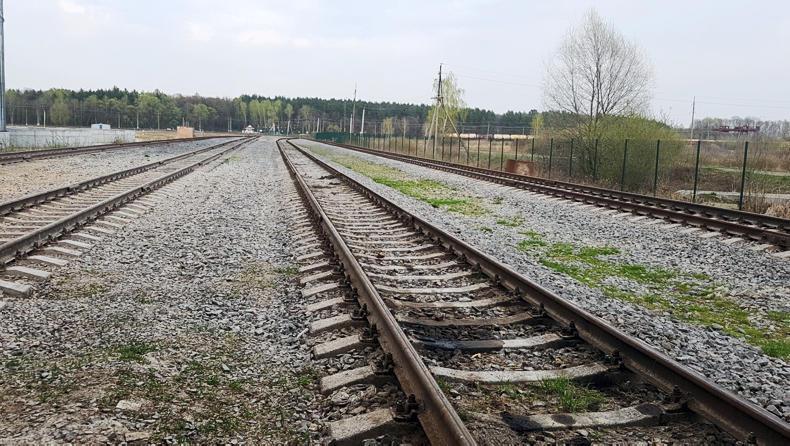
Two sides of the rail way track. USSR rail lines on the right and European rail lines on the left which are different widths on the EU border in Ukraine. Railway lines are used to transport the grain from Ukraine into Europe.
We meet with Jonathon Clibborn from Cork. He married a Ukrainian and has begun a farming enterprise just outside Livi in western Ukraine.
Jonathon gave us a fascinating insight to the challenges of setting up a business in Ukraine.
Everything from a currency that no one outside the country wants to touch, lack of access to finance, inability to buy or lease large land blocks but rather having to negotiate with thousands of very small land owners, reliable merchants to sell produce to that will pay, etc.
The things that we take for granted when it comes to doing business in first world countries like Ireland are huge obstacles in countries like the Ukraine.
One would have to question the sanity of wanting set up a business in Ukraine in the first place but then you have to look at the positives.
The famous deep, black soil is capable of growing crops superior to most parts of the world. There is a very inexpensive workforce and plenty of people looking for employment.
There are huge tracts of land that are not being farmed at all and can be leased for a fraction of the cost in Ireland. .
Ukraine is one of those countries where the possibilities are incredible and yet the challenges seem almost insurmountable. The country is currently producing 60m tonnes of grain with half (30m) of this for export.
The Ukrainian government has ambitions to increase production to 90m tonnes by 2020
From what I have seen I would think it will be a struggle to reach the target. This is due, in no small part, to the unstable political situation with Russia which is having a particularly negative influence on exports as many of the key ports for shipping are controlled by the Russians.
In some ways, I can see that grain is to Ukraine what milk is to Ireland.
A natural competitive advantage in our respective fields yet we in Ireland were hamstrung by EU milk quotas, Ukraine has been restrained by the dominant Soviet influence.
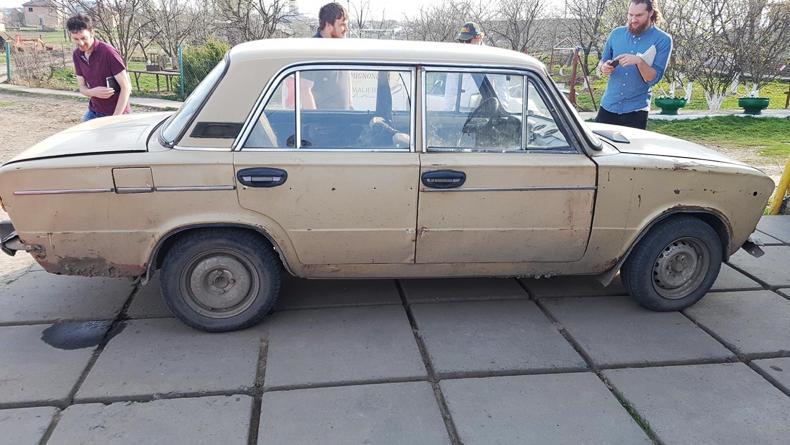
Russian made Lada car. These are common means of transport in Ukraine.
The next stop on our GFP journey took us to Kenya. The African continent is experiencing rapid population growth and Kenya is no different.
With a current population of approximately 46m people which is quadruple what it was 50 years ago and expected to reach 80m by 2050, the demand on the country’s natural resources is ever increasing. From an agricultural perspective, the soil in the parts that we visited in Kenya has the potential to grow good crops suitable to its climate.
However, challenges such as climate change, over-grazing which erodes the soil structure and lack of technical knowledge on best farming practices have limited the development of Kenyan agriculture.
We visited the World Agroforestry Centre which is an organisation doing work across the African continent to improve farming productivity and sustainability.
We visited laboratories that are using infra-red spectrometry in an innovative way to predict soil fertility.
This relatively low cost method is providing African farmers with access to science based data to make more informed decision when it comes to growing crops on their land.
The water issue
As one would expect, water or rather the lack of water is a major issue for agriculture in Africa. We saw many examples of innovative water management initiatives that are providing opportunities for African farmers to make a living.
We heard about other interesting initiatives that are taking place at the Agroforestry Centre which are making a real difference to progressing agriculture in Africa. I found that because this organisation was operating on a pan African basis it has huge potential rather than if it was solely focused on Kenyan agriculture.
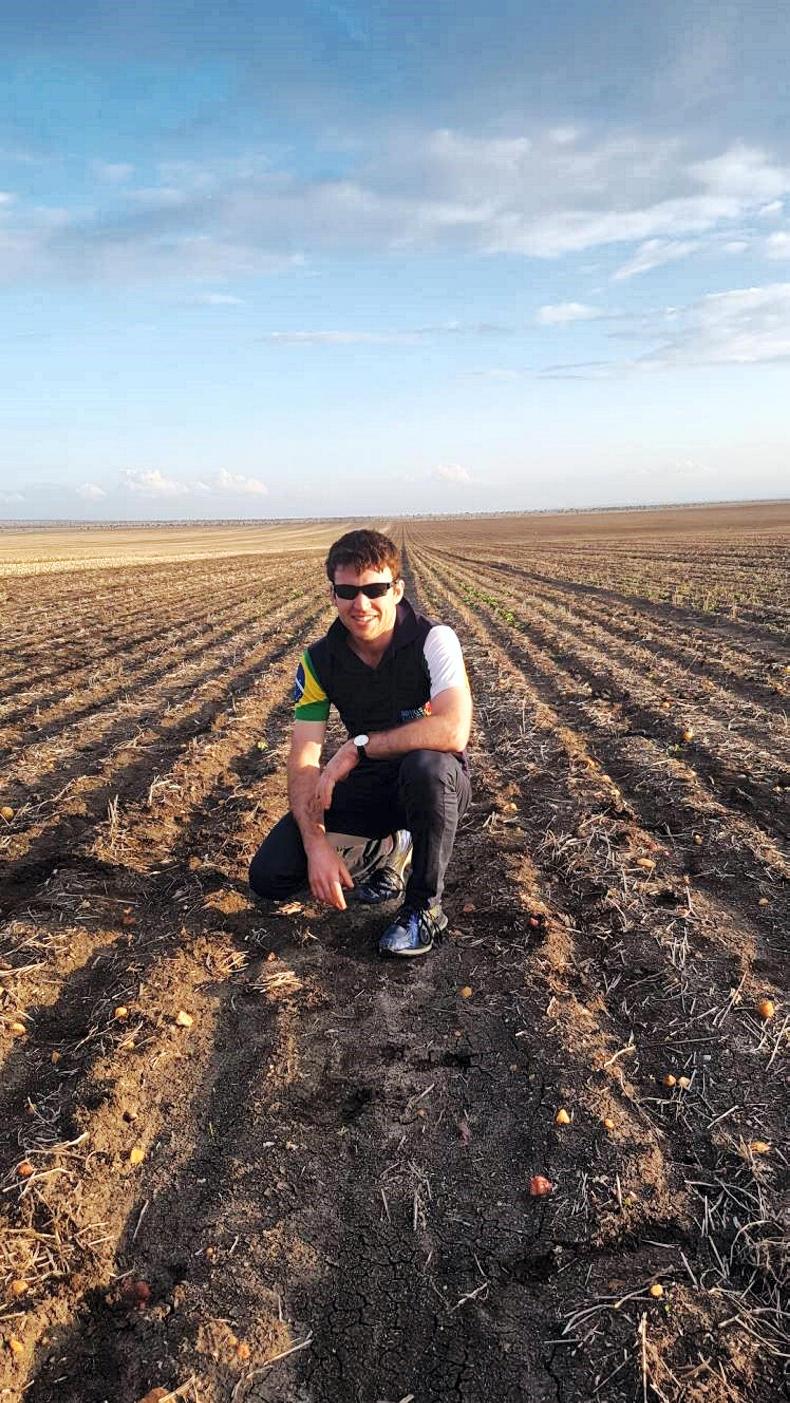 We visited several farms throughout our time in Kenya.
We visited several farms throughout our time in Kenya.
Some of the highlights included meeting an Australian who completed his Nuffield scholarship some years ago after which he decided to sell up his lot in Australia and move to Kenya.
From scratch, he has built up a cropping operation comprising 1000 acres in the middle of what appears on the drive to the farm as arid, infertile soil.
Yet when we reached the farm, it was like an oasis in the desert. It really demonstrated to us the potential for agriculture in Kenya if the right investment, knowledge and technical expertise are combined.
We visited Yoani dairy farm which has a herd of 280 animals with all cows milked by hand every day out in the field.
There are over 50 people employed to manage the dairy herd.
One might say there is a lack of automation and mechanisation but when you consider the huge population in Kenya that are looking for employment and the low wages, the incentive is for farmers to employ more people.
It was a fantastic example of the differences in culture and attitude to employment between Africa and the Western world.
While we might see milking cows by hand as quite labour intensive and almost like hardship, to the locals, it was their way of life and provided them with a living for them and their families.
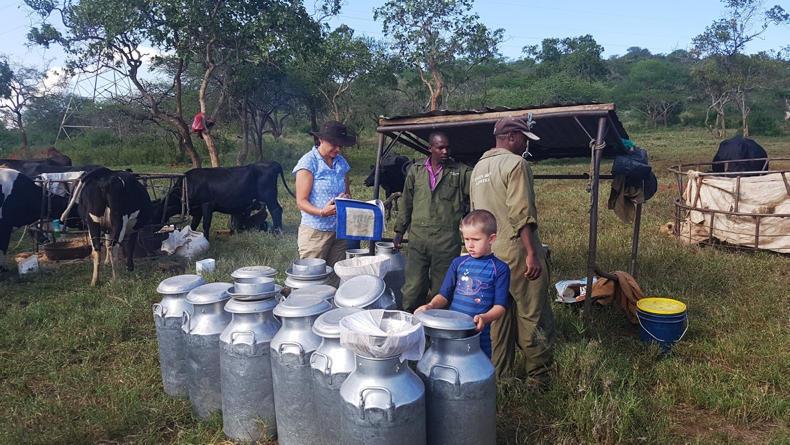
The Yoani Dairy herd being milked in the field by hand with each cow called to milking. Each cow has her own name and is milked by the same person each day.
The Yoani Dairy herd being milked in the field by hand with each cow called to milking. Each cow has her own name and is milked by the same person each day.
We visited other businesses in Kenya which included Pick n’ Peel, a fruit juice manufacture and two large scale cooperative style farming operations, Kaisima and Kakuzi which had many different enterprises.
All these business are very successful in their own right and have grown exponentially over the last 10 to 20 years.
One common thread that I noticed running through all these operations is their social responsibility to local communities.
All these business are giving back to the locals in many different ways be it through building schools, operating health centers, planting forestry to protect the soil and offering as much employment to people as possible.
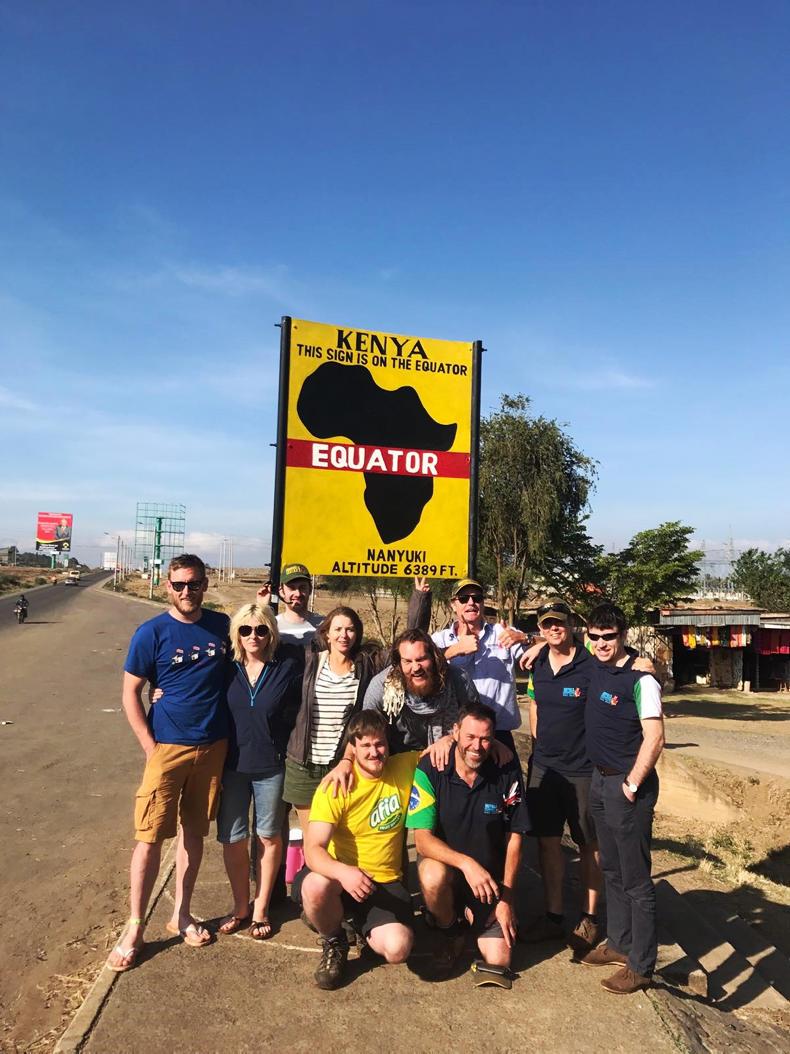
The 2017 African Global Focus Program group in Kenya
Our final leg of the GFP was to South Africa where we spent five days in Johannesburg and five days in the Western Cape near Cape Town.
While I had heard about the apartheid regime that previously operated in South Africa, it wasn’t until I landed in the country that I got a true understanding of what apartheid really meant.
While apartheid ended over 20 years ago it is still a country with huge racial divisions.
Wealth split
Driving through Johannesburg you see modern roads, flash cars and high rise buildings just like any other city in the developed world. It has all the trappings of wealth yet it has massive unemployment running at over 25% and many very poor black people living in townships on the edge of the city.
In rural communities roads are disintegrating from lack of investment and small towns are empty shells of the past.
In one such small town we met with one farmer in his 60's who told us that when he started out farming all the major car manufactures had a dealership in the town, there were several hardware shops and business was thriving.
Now, there are very few businesses left in the town and the local dairy factory has also gone out of business.
He himself has just ceased milk production as it was no longer financially viable.
Stories like this are commonplace in rural South Africa and it highlights to us in Ireland what can happen if we ignore our countryside communities.
I have a greater appreciation of the EU Rural Development funding that makes up part of the CAP budget after seeing what can happen over the space of a generation when government ignores rural communities.
We need to ensure the Irish government and EU budget continues to provide strategic investment in rural Ireland to maintain and hopefully grow our agricultural economy so as to avert anything like what has happened in parts of rural South Africa.
Aparthied
One of the reasons for the decline in agriculture in South Africa is due to the apartheid regime.
Once it ceased in 1994, much of the land that was previously in white people’s ownership and farmed relatively intensively, was bought by the new post-apartheid regime government.
They subsequently offered this land to the black people as restitution for what had happened under apartheid.
However, the government offered no support in terms of agriculture skills, access to markets, technical information or financial support to these people who had never farmed land before.
As a result, many people who were given land struggled to make economic use of the land and in some instances left the land idle.
There are huge land blocks in South Africa that are not being utilized because of the lack of support or forward thinking of the current government.
Over the last few years, South Africa has gone from being a net exporter of food to a net importer and this can be attributed to the stagnation or even deterioration in the agriculture industry over the last 20+ years.
One of the lessons to be learnt from this is the impact government policy can have on an industry. The lack of vision for the industry or understanding of farmers needs from the government has set the South African industry back by several generations.
Having said all that, there is some good initiatives taking place from private enterprise in an effort to educate first generation black farmers.
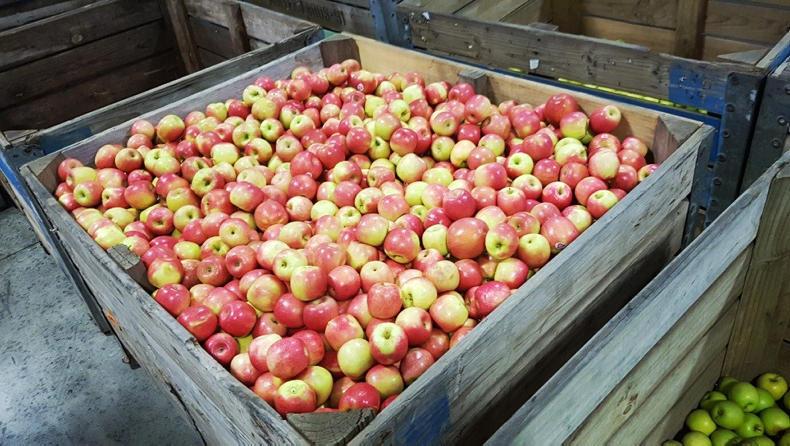
The GFP has been a fantastic, eye-opening experience of what global agriculture is all about. The GFP has opened doors to people and business leaders that I otherwise would never have had access to. It has really demonstrated the scale and diversity of global agriculture but also highlighted some of the common issues that impact farmers all over the world. It has been a perfect start to my Nuffield journey.
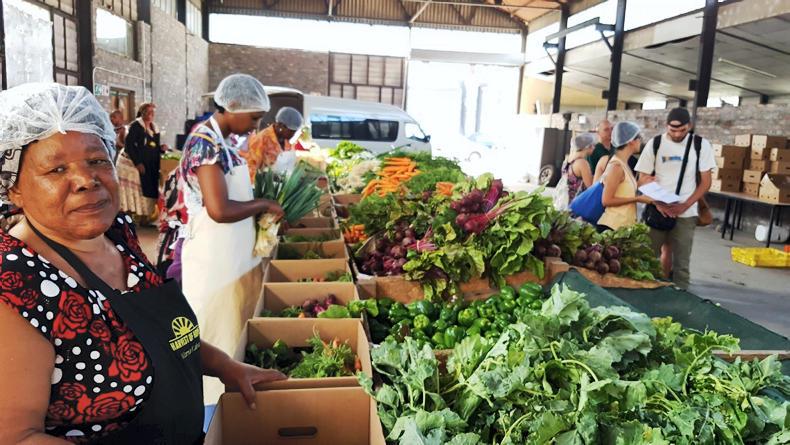
Moving from subsistence farming to successful vegetable growing business in the heart of Cape Town city. Empowering urban women farmers to provide a better future for their families.
From here, my attention begins to turn towards my own individual study about water quality and nutrient management.
Applications for the 2018 Nuffield Scholarship close on 31 July. Anyone intersted in applying can visit here.
Read more
Nuffield blog: a 2,000-strong pedigree Jersey herd in California
Farmer Writes: farmer death rate 20 times higher than average in South Africa
Ukraine in crisis
South Africa: A diverse beef industry with potential
I'm farming in partnership with my parents in Mallow in north Cork and study topic is focusing on “Environment friendly farming – Examining the impact of intensified dairy farming on our water quality”.
I completed the Nuffield Global Focus Programme (GFP) in April and May of this year and here I report below on some of my findings.
After visiting Poland and the Czech Republic, I didn’t quite know what to expect in Ukraine.
We saw the positive impact that EU membership has had on Poland and the Czech Republic in terms of raising productivity, providing access to markets and efficiency of agriculture.
Ukraine, on the other hand, is still very much in the grip of the former Soviet influence.
Everything from the standard of living to the farming methods of the local farmers are several decades behind where Poland and the Czech Republic are.
The average agriculture wage in the Ukraine is below the equivalent of €1/hour and much of the farming is done manually on small one acre plots of land. Corruption is a major issue when it comes to doing business.
Anything from spare parts for a machine can take weeks to be delivered unless you have contacts on the inside.

Two sides of the rail way track. USSR rail lines on the right and European rail lines on the left which are different widths on the EU border in Ukraine. Railway lines are used to transport the grain from Ukraine into Europe.
We meet with Jonathon Clibborn from Cork. He married a Ukrainian and has begun a farming enterprise just outside Livi in western Ukraine.
Jonathon gave us a fascinating insight to the challenges of setting up a business in Ukraine.
Everything from a currency that no one outside the country wants to touch, lack of access to finance, inability to buy or lease large land blocks but rather having to negotiate with thousands of very small land owners, reliable merchants to sell produce to that will pay, etc.
The things that we take for granted when it comes to doing business in first world countries like Ireland are huge obstacles in countries like the Ukraine.
One would have to question the sanity of wanting set up a business in Ukraine in the first place but then you have to look at the positives.
The famous deep, black soil is capable of growing crops superior to most parts of the world. There is a very inexpensive workforce and plenty of people looking for employment.
There are huge tracts of land that are not being farmed at all and can be leased for a fraction of the cost in Ireland. .
Ukraine is one of those countries where the possibilities are incredible and yet the challenges seem almost insurmountable. The country is currently producing 60m tonnes of grain with half (30m) of this for export.
The Ukrainian government has ambitions to increase production to 90m tonnes by 2020
From what I have seen I would think it will be a struggle to reach the target. This is due, in no small part, to the unstable political situation with Russia which is having a particularly negative influence on exports as many of the key ports for shipping are controlled by the Russians.
In some ways, I can see that grain is to Ukraine what milk is to Ireland.
A natural competitive advantage in our respective fields yet we in Ireland were hamstrung by EU milk quotas, Ukraine has been restrained by the dominant Soviet influence.

Russian made Lada car. These are common means of transport in Ukraine.
The next stop on our GFP journey took us to Kenya. The African continent is experiencing rapid population growth and Kenya is no different.
With a current population of approximately 46m people which is quadruple what it was 50 years ago and expected to reach 80m by 2050, the demand on the country’s natural resources is ever increasing. From an agricultural perspective, the soil in the parts that we visited in Kenya has the potential to grow good crops suitable to its climate.
However, challenges such as climate change, over-grazing which erodes the soil structure and lack of technical knowledge on best farming practices have limited the development of Kenyan agriculture.
We visited the World Agroforestry Centre which is an organisation doing work across the African continent to improve farming productivity and sustainability.
We visited laboratories that are using infra-red spectrometry in an innovative way to predict soil fertility.
This relatively low cost method is providing African farmers with access to science based data to make more informed decision when it comes to growing crops on their land.
The water issue
As one would expect, water or rather the lack of water is a major issue for agriculture in Africa. We saw many examples of innovative water management initiatives that are providing opportunities for African farmers to make a living.
We heard about other interesting initiatives that are taking place at the Agroforestry Centre which are making a real difference to progressing agriculture in Africa. I found that because this organisation was operating on a pan African basis it has huge potential rather than if it was solely focused on Kenyan agriculture.
 We visited several farms throughout our time in Kenya.
We visited several farms throughout our time in Kenya.
Some of the highlights included meeting an Australian who completed his Nuffield scholarship some years ago after which he decided to sell up his lot in Australia and move to Kenya.
From scratch, he has built up a cropping operation comprising 1000 acres in the middle of what appears on the drive to the farm as arid, infertile soil.
Yet when we reached the farm, it was like an oasis in the desert. It really demonstrated to us the potential for agriculture in Kenya if the right investment, knowledge and technical expertise are combined.
We visited Yoani dairy farm which has a herd of 280 animals with all cows milked by hand every day out in the field.
There are over 50 people employed to manage the dairy herd.
One might say there is a lack of automation and mechanisation but when you consider the huge population in Kenya that are looking for employment and the low wages, the incentive is for farmers to employ more people.
It was a fantastic example of the differences in culture and attitude to employment between Africa and the Western world.
While we might see milking cows by hand as quite labour intensive and almost like hardship, to the locals, it was their way of life and provided them with a living for them and their families.

The Yoani Dairy herd being milked in the field by hand with each cow called to milking. Each cow has her own name and is milked by the same person each day.
The Yoani Dairy herd being milked in the field by hand with each cow called to milking. Each cow has her own name and is milked by the same person each day.
We visited other businesses in Kenya which included Pick n’ Peel, a fruit juice manufacture and two large scale cooperative style farming operations, Kaisima and Kakuzi which had many different enterprises.
All these business are very successful in their own right and have grown exponentially over the last 10 to 20 years.
One common thread that I noticed running through all these operations is their social responsibility to local communities.
All these business are giving back to the locals in many different ways be it through building schools, operating health centers, planting forestry to protect the soil and offering as much employment to people as possible.

The 2017 African Global Focus Program group in Kenya
Our final leg of the GFP was to South Africa where we spent five days in Johannesburg and five days in the Western Cape near Cape Town.
While I had heard about the apartheid regime that previously operated in South Africa, it wasn’t until I landed in the country that I got a true understanding of what apartheid really meant.
While apartheid ended over 20 years ago it is still a country with huge racial divisions.
Wealth split
Driving through Johannesburg you see modern roads, flash cars and high rise buildings just like any other city in the developed world. It has all the trappings of wealth yet it has massive unemployment running at over 25% and many very poor black people living in townships on the edge of the city.
In rural communities roads are disintegrating from lack of investment and small towns are empty shells of the past.
In one such small town we met with one farmer in his 60's who told us that when he started out farming all the major car manufactures had a dealership in the town, there were several hardware shops and business was thriving.
Now, there are very few businesses left in the town and the local dairy factory has also gone out of business.
He himself has just ceased milk production as it was no longer financially viable.
Stories like this are commonplace in rural South Africa and it highlights to us in Ireland what can happen if we ignore our countryside communities.
I have a greater appreciation of the EU Rural Development funding that makes up part of the CAP budget after seeing what can happen over the space of a generation when government ignores rural communities.
We need to ensure the Irish government and EU budget continues to provide strategic investment in rural Ireland to maintain and hopefully grow our agricultural economy so as to avert anything like what has happened in parts of rural South Africa.
Aparthied
One of the reasons for the decline in agriculture in South Africa is due to the apartheid regime.
Once it ceased in 1994, much of the land that was previously in white people’s ownership and farmed relatively intensively, was bought by the new post-apartheid regime government.
They subsequently offered this land to the black people as restitution for what had happened under apartheid.
However, the government offered no support in terms of agriculture skills, access to markets, technical information or financial support to these people who had never farmed land before.
As a result, many people who were given land struggled to make economic use of the land and in some instances left the land idle.
There are huge land blocks in South Africa that are not being utilized because of the lack of support or forward thinking of the current government.
Over the last few years, South Africa has gone from being a net exporter of food to a net importer and this can be attributed to the stagnation or even deterioration in the agriculture industry over the last 20+ years.
One of the lessons to be learnt from this is the impact government policy can have on an industry. The lack of vision for the industry or understanding of farmers needs from the government has set the South African industry back by several generations.
Having said all that, there is some good initiatives taking place from private enterprise in an effort to educate first generation black farmers.

The GFP has been a fantastic, eye-opening experience of what global agriculture is all about. The GFP has opened doors to people and business leaders that I otherwise would never have had access to. It has really demonstrated the scale and diversity of global agriculture but also highlighted some of the common issues that impact farmers all over the world. It has been a perfect start to my Nuffield journey.

Moving from subsistence farming to successful vegetable growing business in the heart of Cape Town city. Empowering urban women farmers to provide a better future for their families.
From here, my attention begins to turn towards my own individual study about water quality and nutrient management.
Applications for the 2018 Nuffield Scholarship close on 31 July. Anyone intersted in applying can visit here.
Read more
Nuffield blog: a 2,000-strong pedigree Jersey herd in California
Farmer Writes: farmer death rate 20 times higher than average in South Africa
Ukraine in crisis
South Africa: A diverse beef industry with potential


 We visited several farms throughout our time in Kenya.
We visited several farms throughout our time in Kenya. 









 This is a subscriber-only article
This is a subscriber-only article











SHARING OPTIONS: